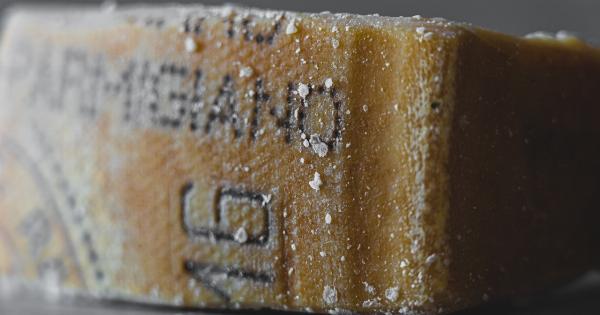Sodium, commonly known as salt, is an essential nutrient required by our bodies in small amounts. It plays a crucial role in maintaining the balance of fluids, transmitting nerve impulses, and muscular functioning.
However, excessive intake of sodium can lead to various health problems, including high blood pressure, heart disease, and stroke. Therefore, it is important to stay updated with the latest sodium guidelines for food and develop a salt sense to ensure a healthier lifestyle.
Understanding Sodium Guidelines
The latest sodium guidelines aim to reduce the excessive consumption of salt, as studies have linked high sodium intake to various health risks.
The Institute of Medicine (IOM) has set the Dietary Reference Intake (DRI) for sodium at 1.5 grams per day for adults. However, the average sodium intake among adults often exceeds this limit, primarily due to the consumption of processed and packaged foods, as well as high-sodium restaurant meals.
The Health Risks of Excessive Sodium
Excessive sodium intake can have detrimental effects on our health. High sodium levels can cause water retention, leading to increased blood volume and higher blood pressure, which puts a strain on the heart and blood vessels.
Over time, this can contribute to the development of hypertension, a major risk factor for heart disease and stroke.
Additionally, excessive sodium consumption can have negative impacts on kidney function. The kidneys play a vital role in maintaining the balance of sodium and other electrolytes in the body.
When sodium intake is consistently high, the kidneys struggle to eliminate the excess sodium, which can lead to kidney damage and impaired function.
Developing a Salt Sense
Developing a salt sense is crucial for maintaining a healthy diet and reducing the risks associated with excessive sodium intake. Here are some practical tips to help you develop a salt sense:.
1. Read Food Labels
When grocery shopping, take the time to read food labels carefully.
Look for products with lower sodium content and choose those labeled as “low sodium” or “no added salt.” Being aware of the sodium content in packaged foods can help you make healthier choices.
2. Cook at Home
Preparing meals at home gives you full control over the ingredients, including the amount of salt added. Experiment with herbs, spices, and salt substitutes to enhance the flavors of your dishes without relying heavily on salt.
By cooking at home, you can significantly reduce your sodium intake.
3. Limit Processed Foods
Processed and packaged foods, such as canned soups, frozen meals, and snacks, tend to be high in sodium. Limiting your consumption of these foods can go a long way in reducing your sodium intake.
Opt for fresh fruits, vegetables, lean proteins, and whole grains instead.
4. Be Mindful of Condiments
Condiments like soy sauce, ketchup, and salad dressings often contain high amounts of sodium. Be mindful of the amounts you use or consider seeking out low-sodium alternatives.
You can also make your own dressings and sauces using fresh ingredients to control the sodium content.
5. Choose Fresh or Frozen Over Canned
Canned vegetables and beans often contain added salt for preservation purposes. Opt for fresh or frozen varieties whenever possible. If you do choose canned products, make sure to rinse them thoroughly to reduce the sodium content.
6. Gradually Reduce Sodium Intake
Reducing sodium intake can be challenging, especially if you’re used to a high-salt diet. However, it’s important to remember that our taste buds can adapt over time.
Start by gradually reducing the amount of salt you add to your meals or recipes and allow your taste buds to adjust. Eventually, you’ll find that you need less salt to enjoy the flavors of your food.
7. Explore Salt Substitutes
If you’re looking for alternatives to traditional salt, there are various salt substitutes available, such as potassium chloride. These substitutes can provide a similar salty taste while reducing sodium intake.
However, it’s important to consult with a healthcare professional before incorporating salt substitutes into your diet, especially if you have underlying health conditions.
8. Embrace Fresh Herbs and Spices
Herbs and spices are a fantastic way to add flavor to your meals without relying on salt. Experiment with different combinations to enhance the taste of your dishes.
Fresh herbs like basil, rosemary, thyme, and spices such as turmeric and cumin can provide a burst of flavor without the need for excessive salt.
9. Stay Hydrated
Drinking plenty of water is essential for maintaining overall health and flushing out excess sodium from the body.
Adequate hydration can assist the kidneys in regulating sodium levels, reducing the burden on these vital organs and promoting their optimal function.
10. Seek Professional Guidance
If you have specific health concerns or conditions that require monitoring sodium intake, it is advisable to seek guidance from a registered dietitian or healthcare professional.
They can provide individualized recommendations tailored to your unique needs and help you make informed choices about your sodium intake.
Developing a salt sense and being mindful of our sodium intake can have a significant impact on our overall health.
By following the latest sodium guidelines and making conscious choices about the foods we consume, we can reduce the risks associated with excessive sodium intake and lead healthier lives.






























